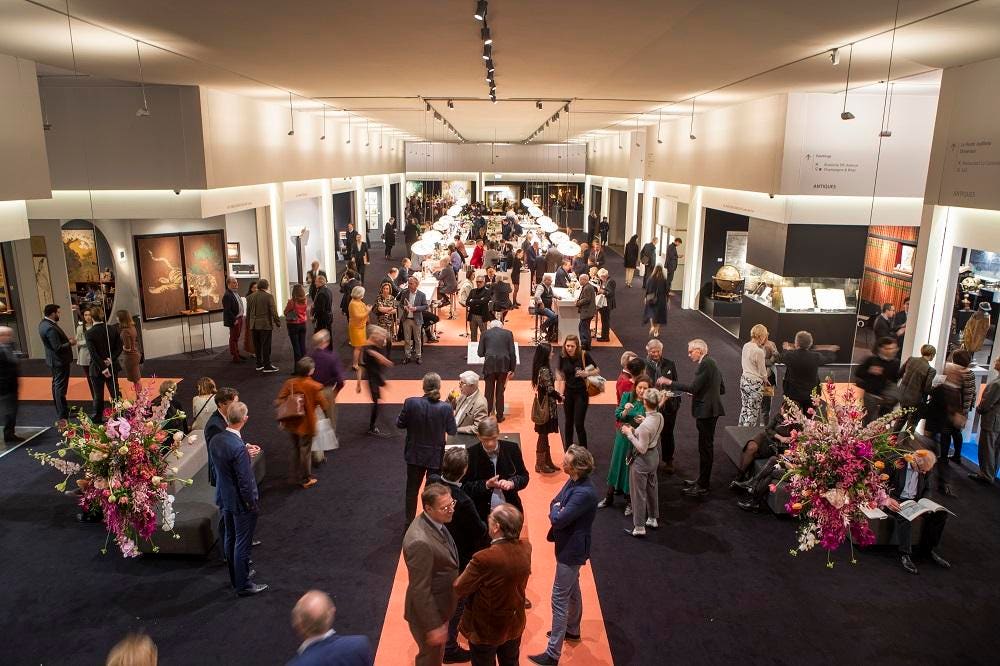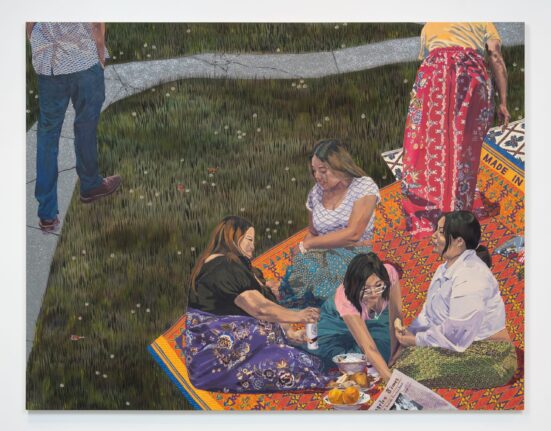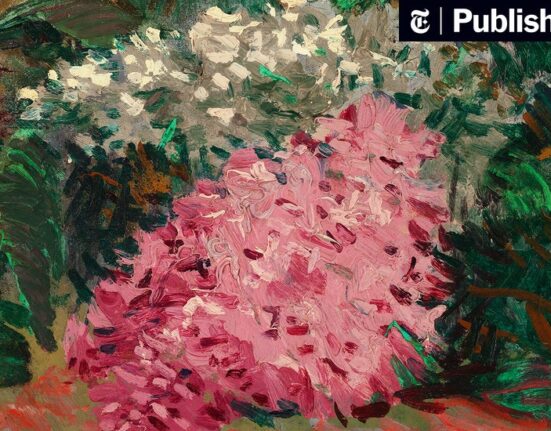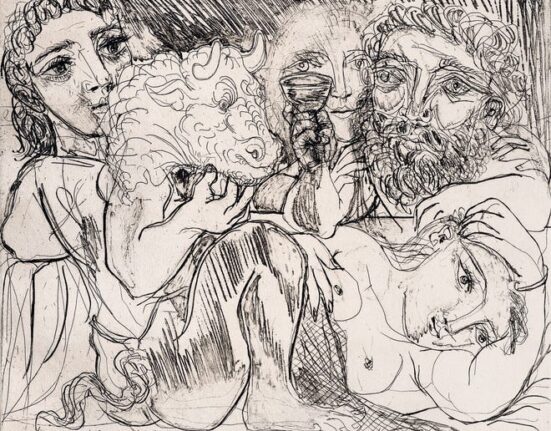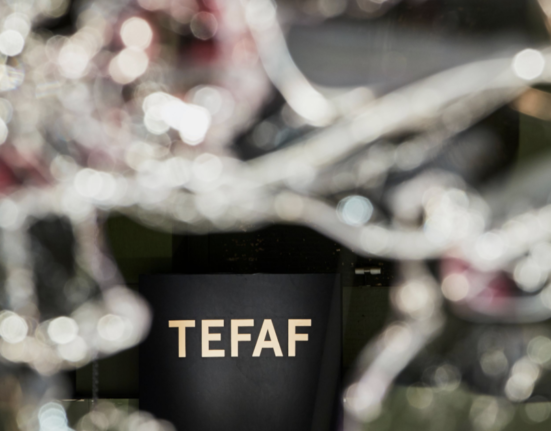TEFAF Maastricht organizers said the annual art fair will close at the end of the day Wednesday after an exhibitor contracted coronavirus. It was scheduled to run until March 15.
Inside TEFAF Maastricht 2020
“In close consultation with the city of Maastricht, the health authorities, and MECC Maastricht, TEFAF has decided to shorten the fair and to close by the end of the day, March 11, 2020 at 7 p.m.,” TEFAF organizers said in a statement. “While the health advice of the authorities in the immediate region has not changed, we understand the situation in the Netherlands and neighboring countries is changing. We have also taken into account the growing concern of exhibitors, visitors and staff and the ever-growing difficulties regarding travel and transport.”
This followed a press release earlier in the day saying that an exhibitor tested positive for coronavirus. The person, who was not identified, attended the fair March 5 -7 and left Maastricht March 8. The person was tested in his hometown the following day. The two regional health authorities, GGD Zuid Limburg and Veiligheidsregio Zuid-Limburg (VRZL), contacted the infected exhibitor and determined that the person was not contagious during his time at the fair and that the fair should continue.
The entrance to TEFAF Maastricht 2020
“We have been in touch with the health authorities (VRZL/GGD) who contacted the exhibitor directly and have looked into the details of this case,” TEFAF’s earlier statement reads. “Based on their assessment, the exhibitor was not showing symptoms at the fair and therefore did not cause a health risk for visitors or anyone working at the fair. Frank Klaasen, head of GGD, said ‘the exhibitor was not contagious during his time in TEFAF.’”
Coronavirus (COVID-19) continues to spread across the globe causing the postponement and cancelation of all kinds of large-scale events worldwide. The European Fine Art Fair, better known as TEFAF Maastricht, held at the MEEC Maastricht exposition center was to continue till March 15 in the southern Dutch city.
People listening to high jewelry artist, Wallace Chan, give a brief lecture
During the two preview days on March 5 and 6 for invited buyers, elbow bumps (named “TEFAF taps” by some) and waves replaced air kisses, cheek kisses and handshakes for greetings.
It was difficult not to notice that attendance for the two preview days was lighter than previous years. American and Chinese visitors were noticeably absent. Many museums in the U.S. chose not to send representatives. Hand sanitizers and sanitizing wipes were everywhere. Buyers and dealers were taking standard precautions of washing one’s hands and avoiding face contact with their hands. But I saw only one person wearing a face mask. Overall, conversation was lighthearted and business related.
Collectors eyeing the jewels outside the Marjan Sterk booth
Among the six high jewelers and the dozen or so dealers of vintage jewels, it was business as usual. Nearly all of them shrugged off the lackluster crowds for the first two preview days. Some did good business anyway. Among them was Viren Bhagat, the Indian high jewelry artist, who chose this venue to make his first appearance at any public fair. He created 30 pieces for TEFAF at a slightly lower cost than normal. It appears to be a strategy that worked.
“We were waiting to see if people would come and they did, which was fantastic,” he says. “We are quite pleased with the sales we made. It’s a completely new audience so we’re very happy.”
Stephen Burton, owner and managing director of Hancocks London holding the Anglesey Tiara
The Bhagat jewelry brand is known for its traditional Indian themes that are understated and refined with an international design aesthetic. He often uses “flat” or sliced diamond and gem cuts and hides the gold settings. This allows the light to shine completely through the gems. He and his staff of approximately 30 craftsmen produce no more than 50 jewels per year and easily sells them all to an eager international audience. He says he doesn’t need to exhibit in order to sell but he found other reasons to exhibit.
“It is the exposure to a completely new crowd, a new market, which is the idea. So I think that’s a great thing.”
Wallace Chan’s booth was busy as well. At regular intervals, small groups of invited guests would crowd the space to listen to the Hong Kong high jewelry artist talk about his creations. Inside the Otto Jakob booth, it was a casual atmosphere as representatives of the German high jewelry brand talked and laughed with clients. In the Van Cleef & Arpels booth, things were businesslike.
Cindy Chao’s new booth at TEFAF Maastricht 2020
For Taiwanese high jewelry artist, Cindy Chao, based in Hong Kong, rather than Coronavirus, she wanted to talk about her new booth design, done in collaboration with Dutch architect Tom Postma, who has served as the in-house architect of TEFAF for 17 years. The darkened space has seven display cases besides what appears to be branches creating an arbor-like entrance from the outside welcoming attendees. The branches also relate to some of Chao’s creations, such as her newest feather brooch (2020 Black Label Masterpiece III Green Plumule Brooch), which has a yellow diamond-paved rachis in the center.
“This is my second year here and I just feel that you can see the character the entire fair,” she said during our meeting in a room behind the booth. “It is very different of course due to the circumstances, a lot of people haven’t come so far. I think it’s really one of the best fairs that attract the best galleries and collectors.”
Before leaving the room, Chao made sure I used the hand sanitizer on the table.
The preview days are the most important because they attract the VIP buyers. However, as the fair opened to the public on March 7 at least one person reported on Tuesday that there have been large crowds. “It’s quite crowded,” said a woman who works in one of the contemporary jewelry booths by email. “I am sanitizing everyone’s hands as often as possible.”
For its part, TEFAF officials have sent out health statements prior to the start of the fair and on Wednesday, discussing its conversations with local health authorities. It also has a health desk in MEEC Maastricht.

